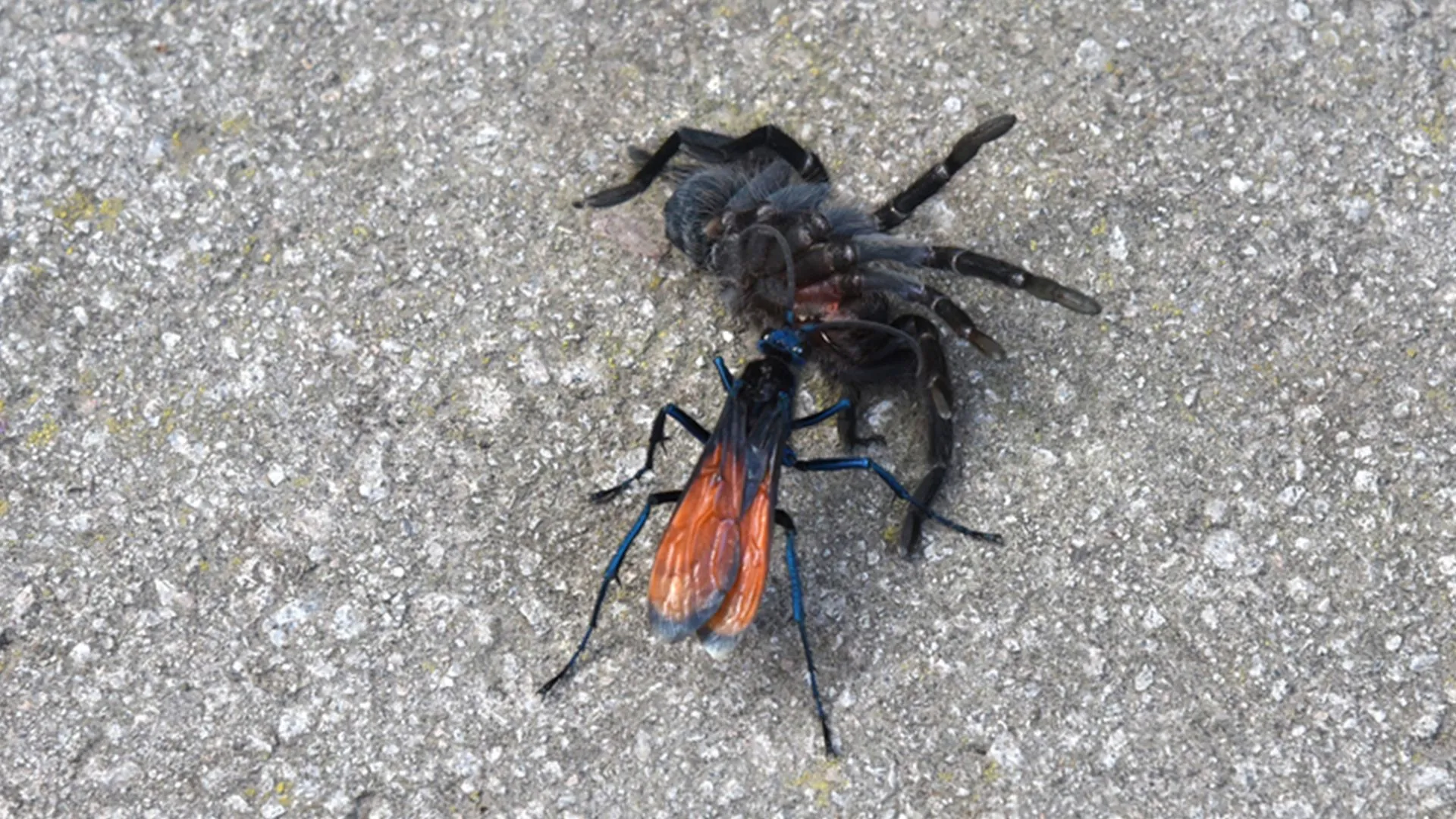What is a Tarantula Wasp?
The tarantula hawk wasp, scientifically known as Pepsis, is a remarkable insect renowned for its imposing size, vibrant coloration, and a particularly painful sting. As its name suggests, this wasp has a unique association with tarantula spiders, which it uses as hosts for its larvae. These wasps are solitary creatures, and the females are responsible for all the tasks involved in reproduction. They are powerful fliers, able to navigate various terrains in search of suitable prey and nesting sites. The lifecycle of the tarantula hawk wasp is a fascinating example of parasitism, where the wasp larvae feed on the living body of a tarantula.
Anatomy and Identification
Identifying a tarantula hawk wasp is relatively straightforward due to its distinctive features. The body is typically a dark metallic blue or black, contrasted by bright orange wings. The wasps are large, with females often reaching up to 2 inches (5 cm) in length, while males are slightly smaller. Their powerful mandibles and long legs are well-suited for capturing and manipulating their prey. Be careful of the sting, the stinger is incredibly long, and is used to paralyze tarantulas. Males can be identified by the presence of a small hook on the end of their abdomen, which is used to hold the female during mating. Both sexes have large eyes and excellent vision, which helps them hunt and navigate their environment.
Habitat and Distribution
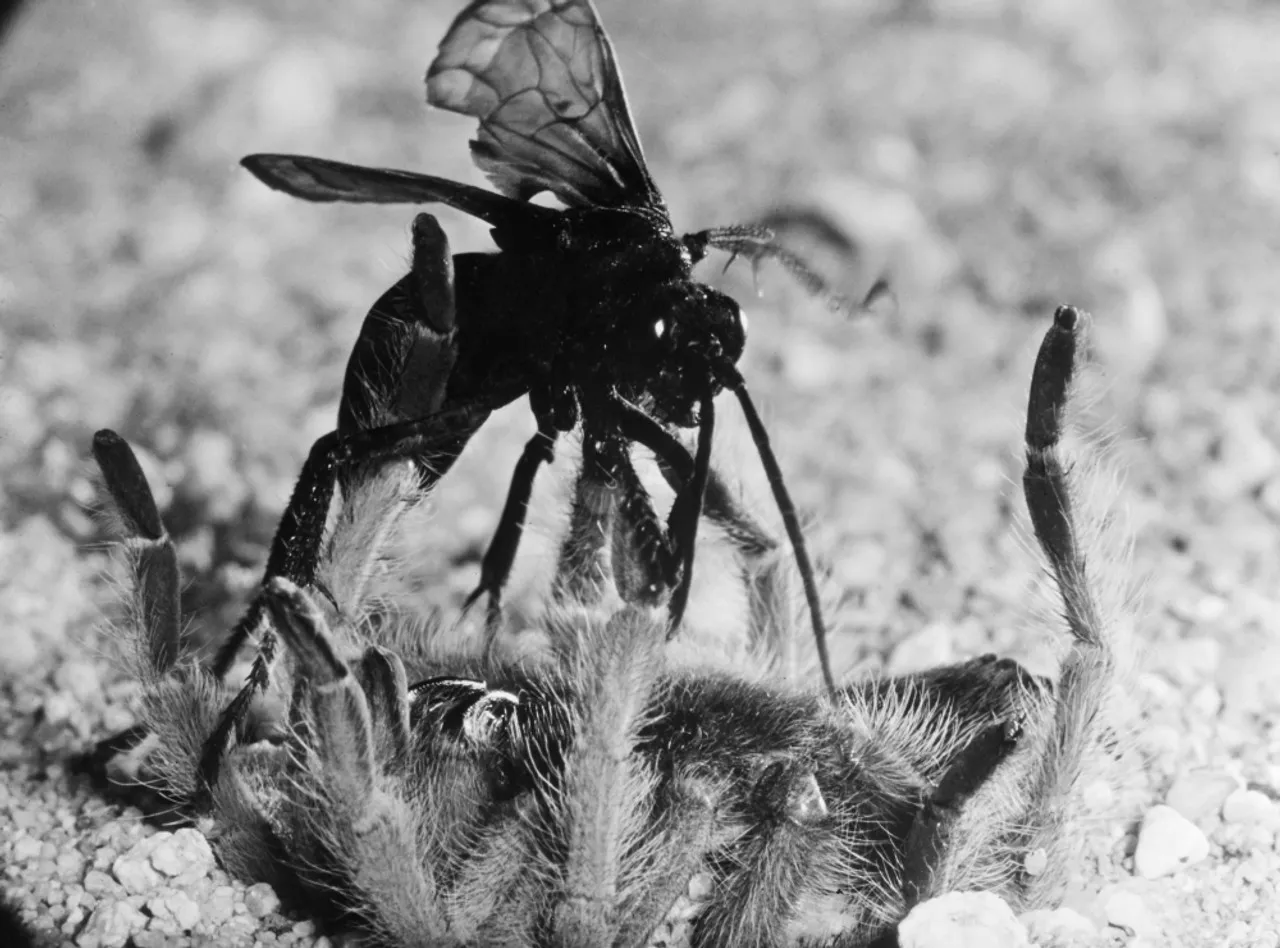
Tarantula hawk wasps are primarily found in arid and semi-arid regions across the globe. They are particularly abundant in the southwestern United States, where they are a common sight in deserts and scrublands. These wasps also inhabit parts of South America, Central America, and other regions with similar climates. The habitat of these wasps is heavily influenced by the distribution of their primary prey, the tarantula spiders. They prefer areas with open ground, where they can readily hunt, and also require access to suitable nesting sites, which often include burrows in the ground or crevices in rocks. The presence of flowering plants is another key factor, as adult wasps feed on nectar to sustain themselves.
Fact 1 The Average Lifespan
The lifespan of a tarantula hawk wasp varies depending on the species and environmental conditions, but generally, they have a relatively short lifespan compared to other insects. Typically, an adult tarantula hawk wasp lives for several months, ranging from a few months to a year. The majority of their time is spent in the adult stage, focused on mating, hunting, and reproduction. The specific duration of life can be influenced by factors like food availability, presence of predators, and climate. This is significantly longer than many other wasp species. Understanding this lifespan provides critical insight into the lifecycle and the survival strategies of these fascinating creatures. The adult wasps have to find mates and then lay eggs, their lives are fully dedicated to propagating the species.
Factors Influencing Lifespan
Several factors influence the lifespan of a tarantula hawk wasp. Food availability is one of the most important. Adult wasps feed on nectar and may supplement their diet with other insects. The more food available, the better their chances of survival. Predation is also a significant factor; tarantula hawk wasps face threats from birds, lizards, and other insects. The ability to avoid predation directly impacts their lifespan. Climate plays a crucial role; extreme temperatures and drought conditions can shorten the lifespan of these wasps, while favorable climates can extend it. Additionally, access to suitable nesting sites is crucial for reproduction, which, in turn, affects how long an adult wasp can live. The health of the tarantula population indirectly influences the wasps’ lifespan, as they depend on tarantulas for larval development.
Fact 2 The Larval Stage Duration
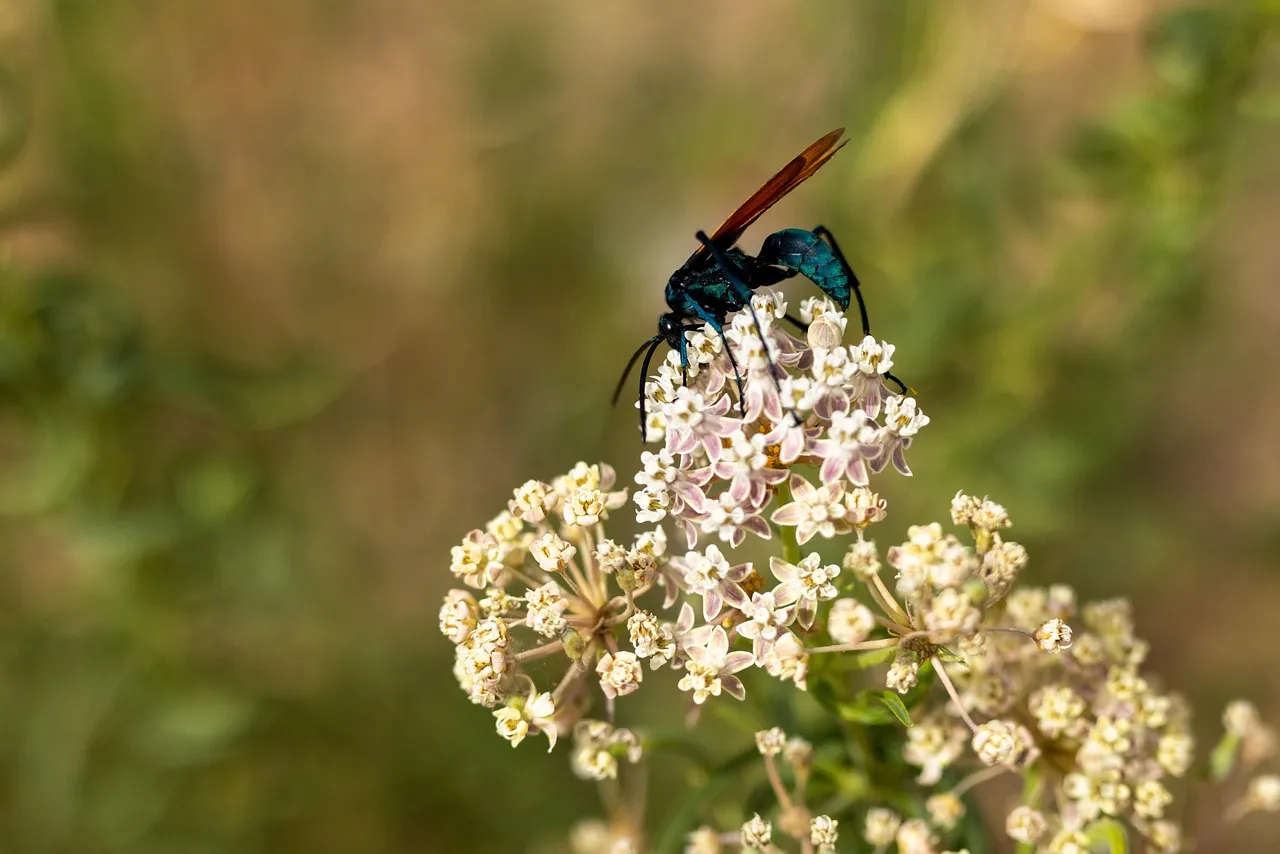
The larval stage of the tarantula hawk wasp is a critical phase in its life cycle, and the duration can vary depending on the environmental conditions and the availability of resources. This stage begins when the female wasp lays an egg on the abdomen of a paralyzed tarantula. The wasp larva hatches and begins to feed on the still-living spider, starting externally and then burrowing inside. The larval stage can last several weeks, during which the larva undergoes a series of molts as it grows. It feeds extensively, utilizing the tarantula as its primary food source. This process requires a substantial amount of time to ensure proper development and survival. The duration of this stage is crucial for the wasp’s future, as it is fully dependent on the tarantula for sustenance.
The Role of Tarantulas
Tarantulas play an essential role in the tarantula hawk wasp’s life cycle. The wasp relies on tarantulas as hosts for their larvae. The female wasp hunts and paralyzes a tarantula with her venomous sting, then drags it back to a pre-made burrow or suitable location. She then lays a single egg on the tarantula’s abdomen. The paralyzed tarantula serves as a living food source for the wasp larva, providing it with nutrition until it is ready to pupate. This parasitic relationship is a remarkable example of natural selection and ecological balance. The wasp’s survival is completely dependent on the tarantula, highlighting the intricate connections within ecosystems and the importance of prey in the survival of predators.
The Wasp’s Hunting Strategy
The hunting strategy of a tarantula hawk wasp is highly specialized and fascinating. The female wasp uses her keen eyesight to locate tarantulas, often patrolling areas where these spiders are known to inhabit. Once a spider is found, the wasp approaches with a calculated approach. The wasp carefully approaches the tarantula, and will then deliver a paralyzing sting to subdue the spider. The wasp will then drag the tarantula, sometimes over considerable distances, to a suitable location for nesting. These wasps exhibit incredible strength and agility during this process. The hunt is not only physically demanding but also requires an understanding of the tarantula’s behavior and a well-timed, precise attack. The tarantula is an important part of the wasp’s ability to reproduce.
Fact 3 The Adult Stage Timeframe
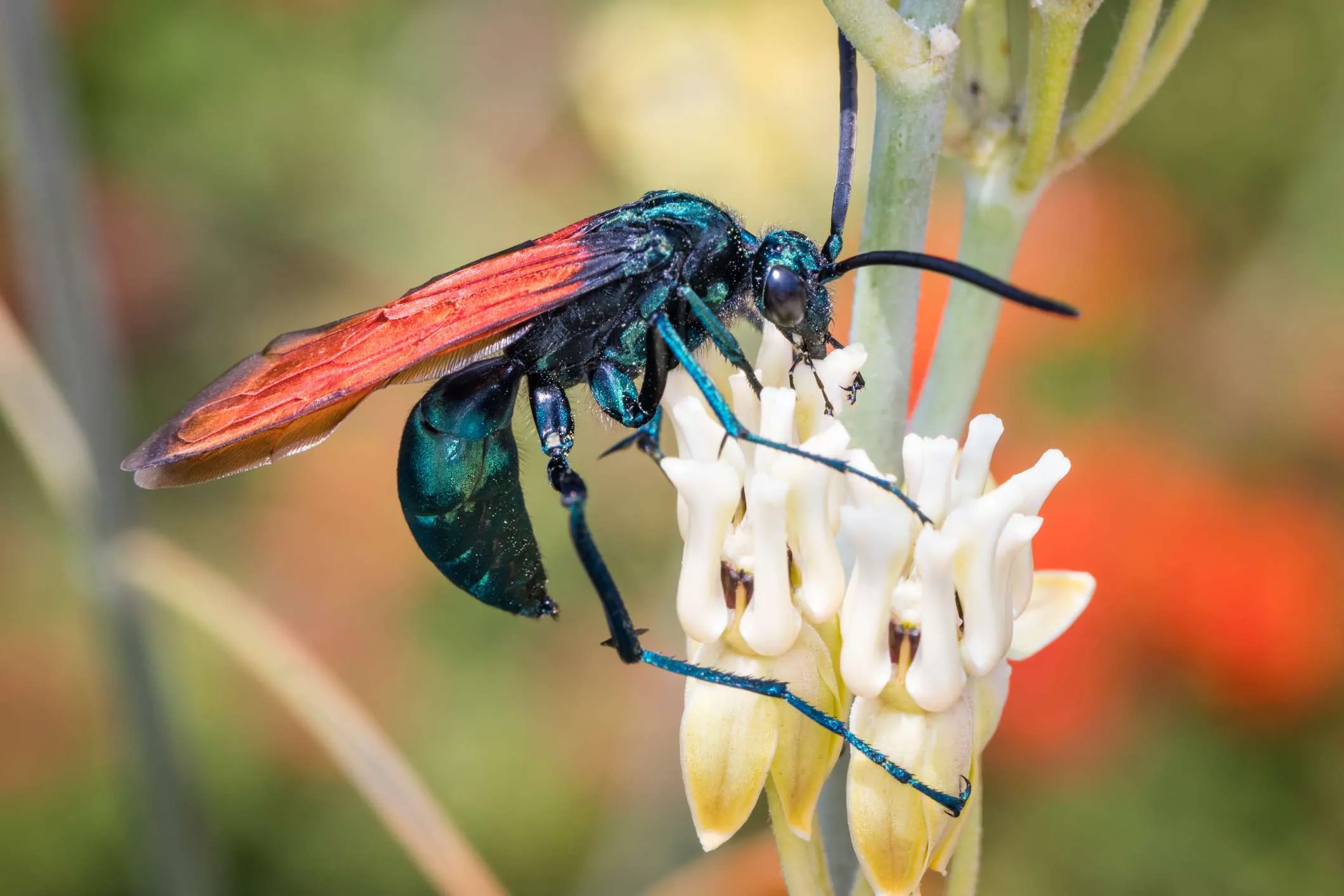
The adult stage is a crucial phase for tarantula hawk wasps as this stage focuses on reproduction and survival. During this time, the wasps mate and the females begin searching for suitable tarantulas to host their larvae. This involves hunting, paralyzing, and transporting the spiders to a safe location. The males primarily focus on mating, defending territories, and locating females. The length of the adult stage varies, typically lasting for several months, and is influenced by factors like climate, food availability, and predation pressure. As adults, wasps consume nectar to fuel their activities, and they also engage in behaviors like thermoregulation, basking in the sun to warm up for flight. Their survival hinges on their ability to reproduce, find food, and avoid threats during this phase.
Mating Behavior
The mating behavior of tarantula hawk wasps is often characterized by a degree of aggression. Males will actively seek out females and compete for mating opportunities. The mating process begins with the male locating a female and attempting to mate. During mating, the male may grasp the female to ensure successful reproduction. The entire mating process is quick, with the focus being on successful egg fertilization. After mating, the female is prepared to begin her crucial work of finding and preparing tarantulas for egg-laying. This process is vital to their survival, as mating ensures the continuation of their species and provides the next generation with the potential to thrive.
Nesting and Egg Laying
Nesting and egg-laying is a crucial component of the tarantula hawk wasp’s life cycle. The female selects a suitable nest site, which can be a pre-existing burrow or a location she prepares. She then hunts a tarantula, paralyzes it, and drags it to the nest. She lays a single egg on the tarantula’s abdomen, then seals the nest. This action protects the egg and provides a food source for the larva. Once the egg hatches, the larva begins to feed on the tarantula. The meticulous nesting and egg-laying behavior ensures that the wasp larvae have the best possible chance of survival. The care and preparation that goes into the nest is evidence of the extraordinary instinctual behavior of these wasps.
Fact 4 Predators and Threats
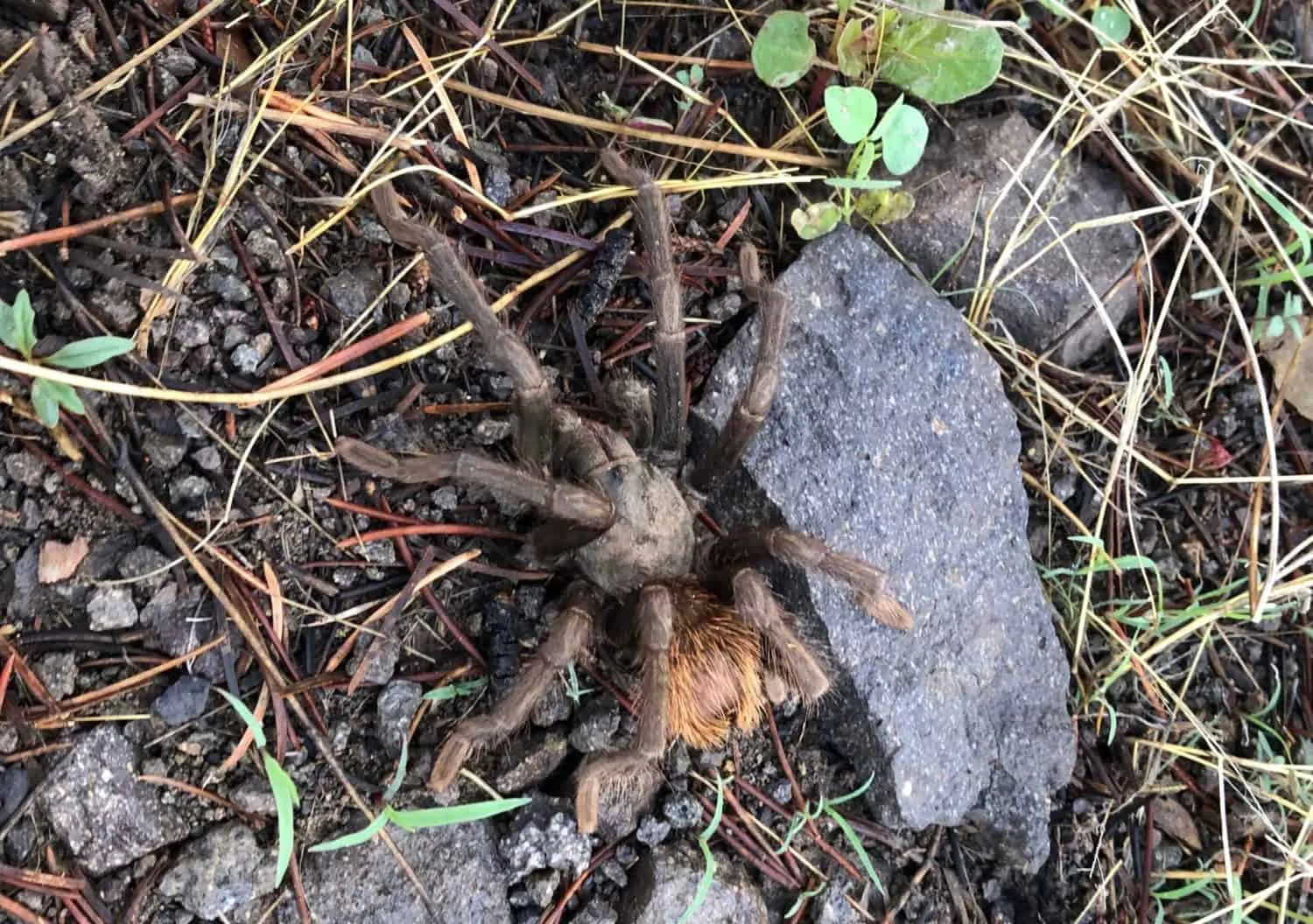
Tarantula hawk wasps face several threats that can impact their lifespan and survival. Predation is a primary threat, with birds, lizards, and other insects preying on both adult wasps and their larvae. Another significant threat is habitat loss, as the destruction of their natural habitats reduces their access to prey, nesting sites, and food sources. The use of pesticides is also a concern, as these chemicals can directly kill the wasps or indirectly harm their prey, disrupting the ecosystem. Parasites and diseases can also affect the wasps’ population, reducing their numbers and impacting their longevity. Understanding the specific threats helps inform conservation efforts to protect these fascinating insects.
Defense Mechanisms
Tarantula hawk wasps have evolved several defense mechanisms to protect themselves from threats. Their most formidable defense is their sting, which delivers a potent venom. The sting is known for its excruciating pain, which deters potential predators. The wasps also employ camouflage and coloration, with their dark bodies and orange wings, which can serve as a warning signal to potential attackers. They are also capable of rapid flight, which enables them to escape predators. The wasps are also equipped with a tough exoskeleton, which provides physical protection against attacks. The ability to defend themselves against predators is essential for their survival and enables them to live longer and successfully reproduce.
Environmental Challenges
Environmental challenges pose several risks to the tarantula hawk wasp’s survival and lifespan. Climate change is a significant factor, causing changes in temperature and precipitation patterns, which affect food availability and nesting conditions. Extreme weather events, such as droughts and floods, can also disrupt their habitats and reduce the availability of prey and suitable nesting sites. Habitat degradation, including deforestation and urbanization, diminishes the areas where they can hunt and reproduce. The depletion of their prey population also leads to problems with survival, as fewer tarantulas directly impact the wasp’s lifecycle. The combination of environmental factors and human activity poses a complex challenge to the long-term conservation of these wasps.
Fact 5 Conservation Status
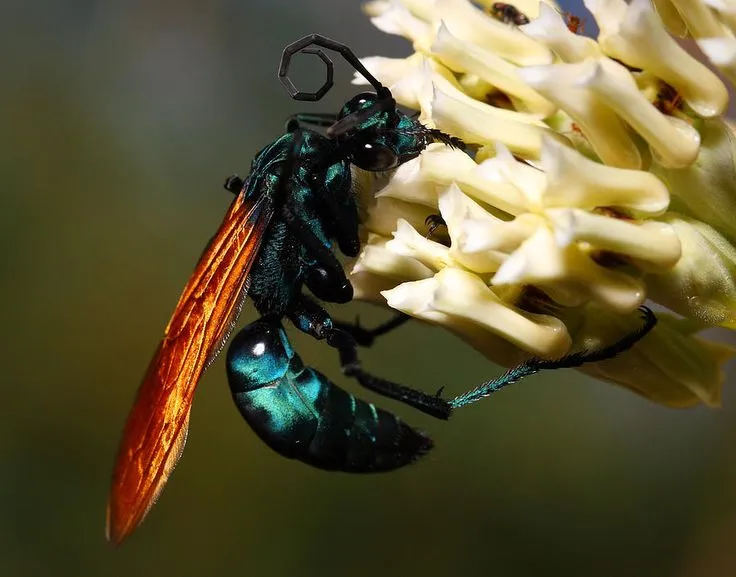
The conservation status of the tarantula hawk wasp is generally considered to be of least concern, although local population declines are possible in areas with high habitat loss and pesticide use. These wasps are relatively widespread throughout their range, and they do not currently face widespread threats that would lead to an immediate risk of extinction. However, it is essential to monitor the populations to track trends and address potential risks. The ongoing threats of habitat loss, climate change, and pesticide use could affect the species in the long term. The conservation status is constantly evaluated.
Human Impact
Human activities significantly impact the tarantula hawk wasp and its lifespan. Habitat loss from urbanization, agriculture, and deforestation reduces the available hunting grounds and nesting sites. The use of pesticides can directly kill the wasps or indirectly harm their prey. Climate change, driven by human activities, is also altering weather patterns and environmental conditions, disrupting their survival. The destruction of these wasps’ environment by humans contributes to a reduced lifespan. The increasing challenges posed by these human factors require ongoing monitoring and conservation efforts to mitigate human impacts and ensure the long-term survival of the tarantula hawk wasp and its natural lifecycle.
Conservation Efforts
Several conservation efforts can support the tarantula hawk wasp. Habitat preservation and restoration are essential, protecting and re-establishing natural habitats to ensure the availability of prey and nesting sites. Reducing pesticide use and promoting sustainable agricultural practices will minimize exposure. Research and monitoring efforts are also necessary to track population trends and understand the impacts of environmental changes. Public education and awareness campaigns can also promote an understanding of the role of the wasps in the ecosystem and the importance of conservation efforts. These combined approaches are vital for ensuring the long-term survival of the tarantula hawk wasp and preserving biodiversity.
In conclusion, the lifespan of a tarantula hawk wasp is a fascinating aspect of its overall biology. Understanding the factors that affect their lifespan, from predation and environmental conditions to their complex interactions with tarantulas, provides a deeper appreciation for the role these wasps play in the ecosystem. Through education, research, and conservation, we can ensure the survival of this magnificent species for generations to come.
